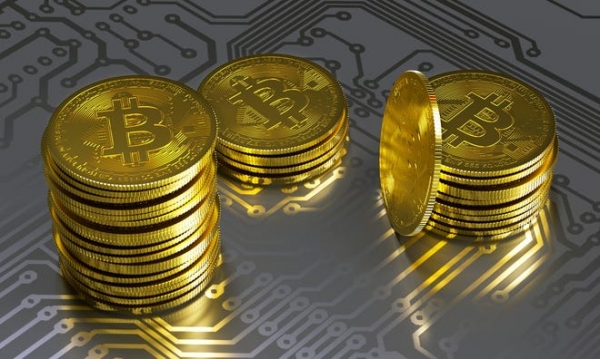How Does Bitcoin Mining Work? What Is Crypto Mining?
However, before investing the time and equipment, read this guide to see if mining is really for you. We will focus primarily on Bitcoin (all the time, we will
- by Gaurav Grover 2021-05-24 08:49:51
Bitcoin mining is the process by which new bitcoins are put into circulation, but it is also a critical component of blockchain ledger maintenance and development. They are carried out with highly sophisticated computers that solve very complex mathematical problems.
Cryptocurrency mining is an intermittently tedious, expensive, and rewarding process. However, mining has a magnetic appeal for many investors interested in cryptocurrencies due to the fact that miners are rewarded for their work with crypto tokens. This may be because entrepreneurs see mining as pennies from the sky, like the gold miners in California in 1849. And if you are so tech-savvy, why not?
However, before investing the time and equipment, read this guide to see if mining is really for you. We will focus primarily on Bitcoin (all the time, we will use "Bitcoin" when we refer to the network or cryptocurrency as a concept, and "bitcoin" when we refer to a number of individual tokens).
How to mine Bitcoins
Miners are paid for their work as auditors. They do a job of verifying the legality of Bitcoin transactions. This agreement aims to preserve the authenticity of Bitcoin users and was designed by bitcoin founder Satoshi Nakamoto. By verifying transactions, miners help prevent the "double spending problem."
Double spending is a scenario where the owner of the bitcoin illegally spends the same bitcoin twice. With physical currency, that's not a problem - once someone handles a $ 20 bill for a bottle of vodka, they no longer have it, so there's no risk of using the same $ 20 bill to buy tickets for lotto tickets. While there is the possibility of making fake money, it is not exactly the same as literally spending the same dollar twice. However, with digital currency, as the Investopedia dictionary explains, "there is a risk that the owner may make a copy of the digital token and send it to a dealer or other party while retaining the original."

Let's say you have a legitimate $ 20 bill and a fake $ 20 coin. If you tried to spend both the real and the fake bill, the person who went to the trouble to look at the serial numbers on the bills would see that they are the same number and therefore one of them must be false. What a bitcoin miner does is similar to this: they scan transactions to make sure users have not illegally tried to spend the same bitcoin twice. This is not a perfect analogy; We will explain it in more detail below.
Once miners verify 1MB (megabyte) Bitcoin transactions, known as a "block," these miners who are mining are eligible to receive a bitcoin bonus (more on the bitcoin bonus below as well). The 1MB limit was set by Satoshi Nakamoto, which is controversial as some miners believe that the block size should be increased to store more data, which means that the bitcoin network can process and verify transactions more quickly.
Please note that 1MB transaction verification makes a coin miner eligible to earn bitcoins; not everyone who verifies transactions will be paid.
In theory, 1MB of transactions could be as small as a single transaction (although this is not common at all) or several thousand. It depends on the amount of data that the transactions consume.
"After all this work on transaction verification, You still can't get bitcoins for it?"
It's true.
To earn bitcoin, you must meet two conditions. One is a matter of effort. One is a matter of luck.
1) You should verify transactions with a value of about 1MB. This is the easy part.
2) You must be the first miner to come up with the correct answer or the closest answer to a numeric problem. This process is also known as proof of work.
What do you mean by "the correct answer to a numeric problem"?
The good news: There is no math or advanced math. You may have heard miners solve difficult math problems, and that's not entirely true. What they're really doing is trying to be the first miner to get a 64-digit hexadecimal number ("hash") less than or equal to the target hash. It is basically speculative work.
The bad news: It's guesswork, but with the total number of possible guesses for each of these problems in the trillions, it's pretty hard work. To solve a problem first, miners need a great deal of computing power. To mine successfully, you must have a high 'hash rate', which is measured in terms of megahashes per second (MH / s), Gigahashes per second (GH / s), and terahashes per second (TH / s).
There are too many hashes.
If you want to estimate the number of bitcoins you can mine using the hash rate of your mining hardware, Cryptocompare offers a useful calculator.
Bitcoin mining and Circulation
In addition to lining the pockets of miners and supporting the bitcoin ecosystem, mining has another vital purpose: it is the only way to launch a new digital currency for circulation. In other words, bitcoin miners are basically "minting". For example, as of November 2020, there were around 18.5 million bitcoins in circulation.

Aside from the coins minted in the genesis block (the first block, created by founder Satoshi Nakamoto), each of those Bitcoins coins came into being, thanks to miners. In the absence of miners, Bitcoin will remain an existing and usable network, but there will be no additional bitcoin. Eventually, there will come a time when Bitcoin mining will end; According to the Bitcoin protocol, the total number of bitcoins will be set at 21 million. However, due to the decrease in the rate of "mined" bitcoin over time, the final bitcoin will not be in circulation until around 2140. It does not mean that transactions stop being verified. Miners will continue to verify transactions and will be charged a fee for doing so to keep the Bitcoin network intact.
Aside from the short-term performance of Bitcoin, being a coin miner can give you the power to "vote" when changes to the Bitcoin network protocol are proposed. In other words, miners have a certain degree of influence over decision-making on matters such as branching.
What do I need to mine Bitcoins?
Although people early in the history of Bitcoin might have been able to compete for blocks with a normal home computer, this was no longer the case. The reason for this is that the difficulty of Bitcoin mining changes over time. To ensure the smooth operation of the blockchain and its ability to process and verify transactions, the Bitcoin network aims to produce a block every 10 minutes or so. However, if there are a million mining rigs competing to solve the hashing problem, they are likely to reach a solution faster than a scenario where 10 mining rigs are working on the same problem. For this reason, Bitcoin is designed to assess and adjust the difficulty of mining every 2016 block, or roughly every two weeks. When there is more computing power at work collectively to mine Bitcoin, the level of mining difficulty increases to keep block production at a constant rate. Less computing power means less difficulty. To get an idea of how much computing power, when Bitcoin was launched in 2009, the initial difficulty level was one. As of November 2019, the number exceeded 13 trillion.
All of this means that to mine competitively, miners must now invest in powerful computing equipment like a GPU (Graphics Processing Unit) or, more realistically, an Application Specific Integrated Circuit (ASIC). Its value can range from $ 500 to tens of thousands. Some miners, especially Ethereum miners, purchase single graphics cards (GPUs) as a low-cost way to bundle their mining operations. The photo below is a homemade temporary bitcoin mining machine. Graphics cards are those rectangular blocks with whirring fans. Notice the twisting ties gone that connect the graphics cards to the metal pole. This is probably not the most effective mining method, and as you can imagine, many miners work on it for fun and challenge as much as for money.
Also Read: Top 10 IT Companies in India 2021-22

POPULAR POSTS
How India’s Online Gaming Ban Triggered a 25% Drop in UPI Payments in Just 9 Days
by Shan, 2025-09-09 12:13:47
Cryptocurrency Explained: How It Works, Key Types, Benefits & Real-World Risks
by Shan, 2025-07-23 08:28:31
Trump’s Big Beautiful Bill Sparks Crypto Clash in Senate: What’s at Stake for Investors?
by Shan, 2025-07-01 12:24:17
$90 Million Crypto Hack at Iran’s Nobitex: Israel-Linked Group Claims Responsibility
by Shan, 2025-06-26 09:43:52
JioCoin: What Is It and How to Earn It Effortlessly?
by B2B Desk, 2025-01-22 09:05:13
Bitcoin Crosses USD 101,000 Amid Optimism Over US Inflation Data Likely Pushing a Fed Rate Cut Decision
by B2B Desk, 2024-12-12 09:49:25
Bitcoin Hits New All-Time High Above USD 100,000 on Optimism Over Donald Trump’s Crypto Plans
by B2B Desk, 2024-12-05 06:20:24
RECENTLY PUBLISHED

Loan EMIs to Drop as RBI Slashes Repo Rate - Full MPC December 2025 Highlights
- by Shan, 2025-12-05 11:49:44

The Agentic Revolution: Why Salesforce Is Betting Its Future on AI Agents
- by Shan, 2025-11-05 10:29:23

Pine Labs IPO 2025: Listing Date, Grey Market Premium, and Expert Outlook
- by Shan, 2025-11-05 09:57:07

Top 10 Insurance Companies in India 2026: Life, Health, and General Insurance Leaders Explained
- by Shan, 2025-10-30 10:06:42

OpenAI Offers ChatGPT Go Free in India: What’s Behind This Big AI Giveaway?
- by Shan, 2025-10-28 12:19:11

Best Silver Investment Platforms for 2025: From CFDs to Digital Vaults Explained
- by Shan, 2025-10-23 12:22:46




 Subscribe now
Subscribe now 